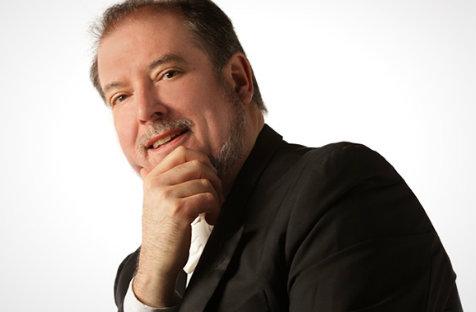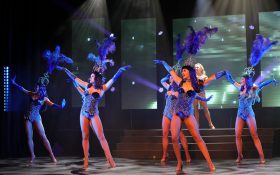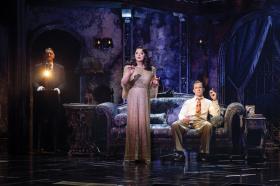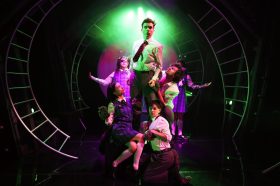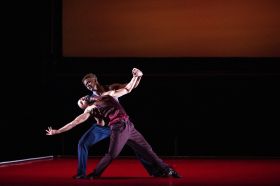They say that an orchestra improves when it goes on tour. I’m not entirely sure who ‘they’ are, however. (Pictures flash through my mind of a secret and hooded council of critics-cum-monks, intoning sacred and universal opinions in Gregorian chant.) But if Vladimir Ashkenazy’s recent foray into Tchaikovsiky’s repertoire (with a short stop at Rachmaninoff) is anything to go by, then yes, yes the Sydney Symphony has improved.
(Of course, this critic was saying precisely the same thing near the end of last year and at the beginning of this solar cycle, during Ashkenazy’s journey through Strauss’ epics, though the quality didn’t subsequently hold up as one would have wanted it to, with only sporadic concerts throughout the year achieving the same intensity and transportative powers. But even the ACO has its less fortunate concerts.)
There is an upcoming Beatles concert this month, but to all intents and purposes (and it seemed like the musicians were treating it this way), the concert that this critic saw in the Concert Hall was the Sydney Symphony’s last for the year; and if anything was to make one yearn for next year to begin as soon as possible, then this concert was it.
We began with Tchaikovsky’s Piano Concerto No.2 in G, Op.44 (original version). The history of it is somewhat similar to the Rachmaninoff concerto a couple of weeks ago, whereby critics of the time, in all their high-and-mightiness, came to the considered opinion that the concerto was not quite to their taste. For the Tchaikovsky, they decided that the length was a main part of the problem, and whereas Rachmaninoff made constant revisions to his own work, it was the pianist for the Tchaikovsky, Alexander Siloti, who made drastic cuts, making, as we’re told in the program, ‘the proud composer bristle with irritation’. And this was the version that endured, until Time, in all its slow but powerful glory, has gradually restored the original into the repertoire.
Garrick Ohlsson was the pianist for the afternoon, and proved himself to be the best this year. (Indeed, Sydney seems to have left the best for last, with Steven Osborne providing one of the highlights of the Australian Chamber Orchestra’s year with his interpretation of Prokofiev’s Visions fugitives and Shostakovich’s first piano concerto.) One is therefore quite dismayed that he isn’t to have a recital, like many an International Pianist does when they perform for the Sydney Symphony, but the fates have decreed otherwise.
What made him so wonderful, so concentratable, was a kind of subdued clarity. Ohlsson is not a man who moves any more than is needed to play the notes – his body rarely moves forward or back more than ten or so degrees, and his arms, when finished for the moment, collapse gently back into his lap. His arpeggios varied throughout the concerto (as well they should), with particular notice to be taken of some which were thrown into the piano like a rolling slap, the end of a red carpet being rapidly unfurled with a whack on the smooth floor, while at other times there was the gentle twinkle of rain from a distance. What Ashkenazy achieved was an excellent balance between the piano and orchestra, such that there was an organic nature to the whole, with each part growing out of the other.
Special mention should be made, as well, of guest concertmaster Daniel Dodds and principal cellist Catherine Hewgill, for their piano trio featured in the second movement (the cellist moving to the left of stage for the duration, then back again for the finale). The encore from Ohlsson was Tchaikovsky’s Romance in F minor, Op.5, and this critic could’ve listened to it on a loop for an hour and still been entertained by the end, with its delicate outer sections and somewhat rambunctious inner.
Doomed to follow after the interval was Tchaikovsky’s Symphony No.4 in F minor, Op.36, which one didn’t expect to reach the same heights as the piano concerto (it is rare for every piece in a concert program to be of the same quality, especially when the first is about as high quality as one can get), yet it managed to come rather close. The problem one had was with the third movement, with its famous barrage of pizzicato from the strings, for it wasn’t quite as playful as one would have liked. But the other three movements, conducted by Ashkenazy sans score, were as blustery and dominating as one could want.
Overall, a stunning afternoon, and a, hopefully, welcome omen to next year.
Rating: 4 ½ stars out of 5
Totally Tchaikovksy
Sydney Symphony
Garrick Ohlsson – piano
Vladimir Ashkenazy – conductor
Pyotr Ilyich Tchaikovsky – Piano Concerto No.2 in G, Op.44 (original version)
Pyotr Ilyich Tchaikovksy – Symphony No.4 in F minor, Op.36
Concert Hall, Sydney Opera House
8 December
